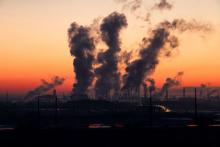Over the last two decades, scientists have been keeping a close eye on the atmospheric concentration of a hydrofluorocarbon (HFC) gas, known as HFC-23.
This gas has very few industrial applications. However, levels have been soaring because it is vented to the atmosphere during the production of another chemical widely used in cooling systems in developing countries.
Scientists are concerned, because HFC-23 is a very potent greenhouse gas, with one tonne of its emissions being equivalent to the release of more than 12,000 tonnes of carbon dioxide.
Starting in 2015, India and China, thought to be the main emitters of HFC-23, announced ambitious plans to abate emissions in factories that produce the gas. As a result, they reported that they had almost completely eliminated HFC-23 emissions by 2017.
In response to these measures, scientists were expecting to see global emissions drop by almost 90 percent between 2015 and 2017, which should have seen growth in atmospheric levels grind to a halt.
Now, an international team of researchers have shown, in a paper published today in the journal Nature Communications, that concentrations were increasing at an all-time record by 2018.
Link to article:



